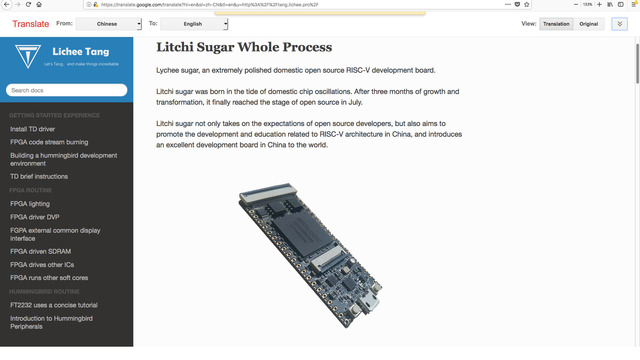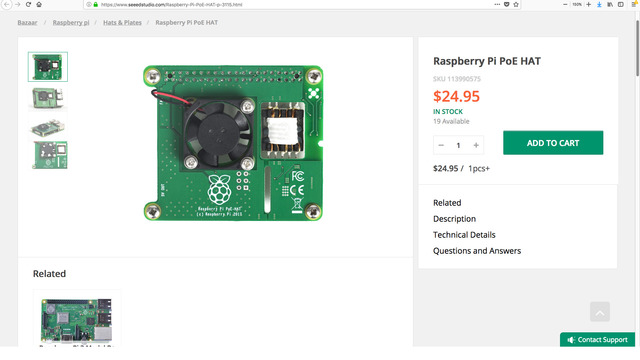Weekly Roundup #58: New Maker Products // News
This is yet another Weekly Roundup of New Maker Products, but going back to the old time-slot of Wednesday. I’ll be interleaving it with my other mid-week videos, so it’s technically not a Weekly Roundup, but anyway… On with the show.
Crowd Funding
KickStarter
Kortex Xtend Lite
First up on Kickstarter there’s a campaign up for a WiFi repeater called the Kortex Xtend. WiFi repeaters are a dime a dozen, but this one comes in a pretty tiny package and has LiPo battery charging built in. Since it’s an open source product, you’ll not only be able to extend WiFi signals, but do other things like sniffing traffic, network segmentation and shaping, and even act as a de-auther.5V to 900V step-up converter
If you want to get into high voltages, then here’s a simple campaign for a boost converter giving you 900v DC from a 5v DC supply. It’s not just a DC boost converter as it has an OLED display and ATmega328P onboard, allowing you to control output voltages over UART. If you’re in to OpenHAB, geiger counters and er… high voltages, then this looks interesting.Pico
The Piksey Pico is another let’s getting everything as small as possible PCB. This one contains the ineffable ATmega328PB in a tiny 20 by 20mm package. It breaks out 25 of the 27 available GPIOs on the 328PB, which is 4 more than the Arduino Nano. They also have the Piksey Nano, which is the same form factor as the Arduino Nano, but with more GPIO options.4-Mation
This is pretty cool. 4-Mation is a 3D zoetrope. Which is a fancy way of saying, it simulates stop-frame animation in real life. You add objects in various poses onto a disk that spins and a flashing light overhead will strobe on and off simulating movement of whatever is on the disk. There’s also an iPhone app for it.OK. It’s pretty expensive, but cool nonetheless.
IndieGoGo
Nothing happenin' on IndieGoGo
Crowd Supply
but Crowd Supply has a few things.
StereoPi
StereoPi is a PCB that provides a stereoscopic camera setup for vision analysis. It isn’t just a Pi hat, but a PCB that allows the use of Pi Compute Modules. The board has, of course, two MIPI-CSI connectors, SD card, 2x USB ports, Ethernet, HDMI out and also breaks out a standard Pi header. There’s already some fairly complete examples on display, so looks like it’s beyond the prototype stage.UP AI CORE X
Back in Weekly Roundup #55 we saw the AI CORE X on Kickstarter. Well, know the UP guys are back, this time on on Crowd Supply with the AI CORE X. These are some pretty beefy boards all packaged into a tiny M.2 key based PCB. You can literally slap these into anything that supports M.2 and considerably beef up your Machine Learning and AI.wESP32
Wireless based IoT devices are all fine and good, but you still need to power the little buggers. PoE is the logical answer to this as it reduces the need for all those messy wall-warts or having to work with ultra-low power MCUs. Here’s an ESP32 based board with inbuilt PoE, but unlike most dodgey PoE devices, this one aims to be fully compliant with the PoE standard.Honorable mentions
Lindenis V5
Lindenis V5 is a new SBC from Lindenis Pty Ltd.This board is touting the relatively new AllWinner V5 SoC which only a couple of other SBCs are running.
Not only does it come with the quad-core Cortex-A7 SoC running at 1.5GHz, but 1 or 2GB RAM, SD slot, eMMC socket, 4x USB2.0 ports, GbE, optional WiFi and Bluetooth, MIPI-DSI, audio in and out, HDMI capable of 4K at 30FPS, but the little buggers are using a microUSB port for power. Shame. You also have LiPo battery support, a standard Pi GPIO header and also additional I2S and ADC headers.
On the flip side is interesting. There’s two MIPI-CSI headers. The Embedded Vision Engine supports facial recognition with a detection speed of 30fps at 360p, but it does support a 4K input. The Computer Vision Engine allows for tracking of moving objects at 10fps 720p. They are supporting OpenCV and Tensorflow APIs.
MuxPi
If you’re in to testing SBCs, or developing for SBCs, then the MuxPi looks promising.It’s a PCB made by Tizen to allow full remote testing of an SBC. All you need is a NanoPi NEO and you can physically power on and off the device, reflash the SD card, measure power consumption and send fake EDID info over HDMI to support screens larger than actually have.
It’s not an actual product, but rather a hacker release. You can pick up all schematics, board layout and other documentation from their WIKI.
NanoPi M4
FriendlyElec are really a friendly bunch. They are starting to become fairly popular with SBC hackers as they are the better supported. They are now back with a new SBC called the NanoPi M4.This board is yet another SBC joining the RK3399 ranks. It comes in a now standard Pi form factor which, as you can see, will allow it to fit into any Pi case. Not only does it have the hexa-core RK3399 running at 2GHz, but comes in 2 and 4GB DDR3 RAM variants along with 4x USB3.0 ports, GbE, WiFi, Bluetooth, 4k/60FPS capable HDMI, audio in/out, MIC, MIPI CSI and DSI, eMMC, SD and not only a standard Pi header, but an extra row of 24 header pins providing PCIe, PWM, USB and a few more GPIOs.
The really smart design is ditching the microUSB and using a USB TypeC instead. Nice move. I actually have one of these sitting on my desk waiting to be reviewed. So stay tuned for that.
Lichee Tang
The Lichee Tang is yet another PCB being added to the ever growing list of cheap FPGA boards. This one contains the not so common Anlogic EG4S20BG256. What is it with these FPGA manufacturers and product names?This FPGA has 20,000 LUTs, 130KB SRAM and 64Mbit SDRAM. To get an idea of how much grunt this has, it has just enough to be able to run the RISC-V core. The board has USB providing power and programming, 8Mbit flash, SD slot and expansion headers supporting RGB LCD, high speed DACs and DVP camera.
Blueberry Pi
Over at HackADay.io there’s a project up called the Blueberry Pi. This is a custom SBC running the AllWinner V3, which is a low end SoC running a Cortex-A7 @ 1.2GHz. This is something you’d find in home network routers and gateways.It has MIPI-CSI and DSI, GbE, audio, Pi header and supports driving LCD screens. Pretty neat little package, that would have taken a while to design.
nFuse - LoRaWAN concentrator
The nFuse is another option for getting into LoRaWAN. It’s a LoRaWAN concentrator in an M.2 key format allowing you to setup a LoRaWAN gateway. It not only contains an SX130x LoRa transceiver, but an STM32 handling most of the grunt work. Also has a surface mount u.FL for external antenna.MCC118 DAQ Pi hat
We’ve seen several acquisition boards in past Weekly Roundups. This one is a Pi hat that’s stackable. Each PCB can handle 8 channels at 12bit resolution and 100ksps. Not blazingly fast, but you can stack up to 8 of them giving you 64 channels measuring from -10 to +10v.They also provide open-source C, C++ and Python libraries.
Arduino CLI
The Arduino guys are finally getting around to providing a proper Arduino CLI. It’s only in alpha stage at the moment, but looks promising. You can do everything that you can do in the GUI and didn’t see anything that was missed out.You can pick up the alpha releases from Arduino, or build from scratch. Just a quick look through the source tree shows up that the entire CLI was written in Go.
This is a promising sign. Maybe the start of moving away from Java and maybe the GUI front-end will eventually just call the CLI.
STM32F7x0 and STM32H7x0
The STM32 lineup MCUs have been pretty popular and some of them are pretty grunty offering more options than the Atmel lineup. The STM32F7 and H7 series were a pretty expensive but grunty MCU being clocked at 300 and 400MHz respectively. STMicro have now released a cheaper version of these MCUs with smaller flash to reduce costs.The STM32F730 runs the same 216MHz core, but has a crypto engine, USB and CAN bus.
The STM32F750 adds on an LCD controller, Ethernet and a bit more RAM.
And the more grunty STM32H750 running at 400MHz has a fairly fast ADC running at 3.5Msps and a hardware JPEG codec. Nice to see STMicro pushing the envelope again with some grunty MCUs.
ATtiny3216 and ATtiny3217
At the other end of the spectrum, and proving 8bit ain’t dead yet, Microchip have released their ATtiny3217 and ATtiney3216 MCUs.Both MCUs are almost identical with 32KB flash, 2K RAM, the usual lineup of GPIOs, I2C, SPI and UARTs, but the 3217 has a 20 channel, 10bit ADC while the 3216 has 16. It’s a fairly tiny increment to the 8bit lineup, but if you need more ADCs, then you can get it on these.
DEFCON badges
Do I need to point out all the DEFCON badge crazy going on last month? If you want to get your fix, then HackADay has not one, but two pages of drool worthy badges on show.Maker Shops
Tindie
Over at my favourite Maker store …
Lumens Compact
… you can pick up the Lumens Compact. This is another PWM based LED driver board that can directly connect onto a 12v SLA battery driving LEDs at night and charging via solar panel by day. There’s no visible MCU providing a UART or wireless connectivity, so control is via simple switches and pot.LED sound meter kit
This is a pretty decent plated through hole kit for a audio sound meter. So, great project for some wanting to get into electronics and have something useful at the end of it.Mosfet H-Bridge
And if you want a quick H-bridge driver allowing control of DC and stepper motors, then this one will drive up to 85A at 14v, but has a fairly flexible logic level input allowing 3.3, 5v or even 12v logic levels.I2C Isolator
Haven’t really seen any breakouts for an I2C isolator before. This one accepts 3.3 or 5v logic levels and can handle up to 100kHz I2C bus speeds, but also provides full galvanic isolation, eliminating ground loops, noise and other weird things that can occur in electrical circuits.Sound Toy Box
This is cool. It’s essentially an effects pedal, based on the V1000 IC. It runs an ATmega328P allowing UART based control over several effects on an audio input, like chorus, echo, flanger. Nice.16 Channel Logic Analyzer
We’ve seen a number of ultra-cheap logic analyzers from China based on this chip. Here’s someone selling an OpenHardware version on Tindie. There’s full support for sigrok for this chip, so it’s a pretty good option.ESProg
You probably have a bunch of bare ESP modules and get annoyed with having to drop into program mode all the time.The ESProg is a programmer for almost all the ESP series modules that has a similar auto-program circuit similar to nodemcu, which saves that annoying button pressing before programming. Nice.
AdaFruit, Seeed, SparkFun, DFRobot, DigiKey
BH1745 breakout
Over at Pimoroni you can pick up one of their I2C based BH1745 luminescence and colour sensor breakouts. It can detect RGB colours and light levels fairly accurately and comes in a pretty small package.LSM303D breakout
There’s also an SM303D 6DOF IMU breakout, which has accelerometer and magnometer, but lacks gyro. It’s not one of the most uber IMUs around, but fairly good bang for your buck.Both of these modules can work by direct soldering, or …
Breakout Garden HAT
… they can be added to the BreakOut Garden Hat. Strange name, but good concept. This allows you to use either of those boards standalone, or insert into these small edge connectors. It routes I2C, SPI and UART signals from those boards out to a handy header for use with a PI or Arduino.Retroflag NESPi Case
Over at DFRobot they have an injected molded case allowing you to add a Raspberry Pi and pretend that you’re still in the 80s getting annoyed at Elevator Action.Gravity: Digital I2C Signal Isolator
Similar to the one on Tindie, DFRobot are selling an I2C isolator as well. Does pretty much the same as the one on Tindie, but this one can only handle 5v.Gravity: Digital 1-to-8 I2C Multiplexer
And if you’re stuck for I2C addresses and you’re seeing clashes, then this I2C multiplexer will give you 8 independent I2C channels. So hook up the devices with the same address and you’ll still be able to access them both.USB 2.0 Type-C breakout
Ah nice! a USB TypeC breakout over at Pololu! I’ll have to pick up a couple of these.5V buck/boost regulator
Something for the Makers down-under. There’s this 5v buck/boost regulator from RobotGear that you can chuck into a breadboard easily. A little bit pricey, but hey that’s what you have to put up with living in the land down-under.Solid state relays
Over at Seeed Studio they have come out with a bunch of solid state relay boards in various outputs from 1 to 8.They also have an onboard STM32 providing I2C based control via a Grove port and those handy push connect terminals. Each SSR can switch a 240v 2A load, so pretty useful little things. This is probably the first time I’ve seen a major shop-front use SSRs.











































